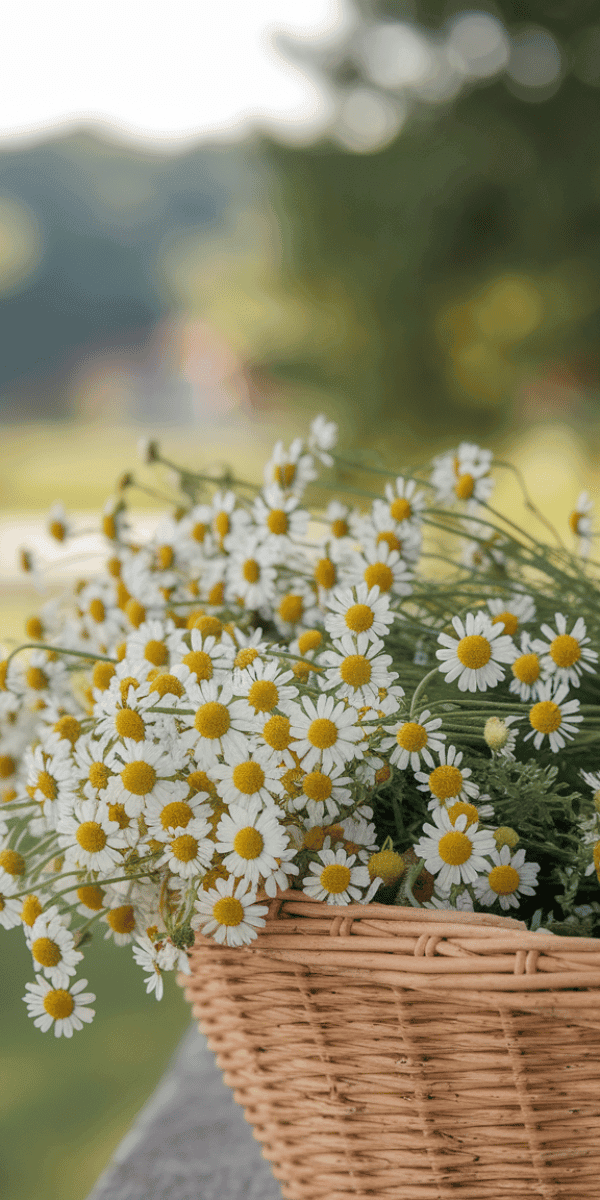Imagine stepping into your backyard to pluck remedies for stress, sleep, or immunity—right from your own living pharmacy. A sustainable herb garden isn’t just a trend; it’s a timeless way to connect with nature’s healing power. Let’s transform your space into a thriving, eco-friendly sanctuary.
Step 1: Plan Your Medicinal Oasis
Sunlight & Soil Basics
- Full sun (6+ hours): Lavender, echinacea, calendula, yarrow
- Partial shade (4–6 hours): Chamomile, feverfew, evening primrose, chicory
- Moist soil lovers: Marshmallow, California poppy
Pro Tip: Test your soil pH (ideal: 6.0–7.0). Improve drainage with compost or raised beds.
10 Essential Medicinal Herbs + Their Superpowers
| Herb | Key Benefits | Growing Tips |
|---|---|---|
| Calendula | Heals wounds, reduces inflammation | Drought-tolerant; harvest bright petals |
| Chamomile | Calms nerves, aids sleep | Grow in pots to control spread |
| California Poppy | Eases anxiety, pain relief | Thrives in poor soil; full sun |
| Echinacea | Boosts immunity, fights colds | Divide roots every 3 years |
| Evening Primrose | Balances hormones, soothes skin | Biennial—harvest roots in Year 2 |
| Feverfew | Prevents migraines, reduces fevers | Pinch flowers to prolong growth |
| Marshmallow | Soothes sore throats, digestive issues | Keep soil consistently moist |
| Chicory | Liver detox, coffee substitute | Taproot grows deep—plant in ground |
| Lavender | Relieves stress, repels pests | Prune after flowering for bushiness |
| Yarrow | Stops bleeding, reduces fever | Divide clumps every 2–3 years |
🚀 Skip the Guesswork: Nicole Apelian’s Medicinal Garden Kit includes seeds for ALL 10 herbs above, plus a step-by-step guide—perfect for beginners!

Join My Newsletter & Download Your Free Herb Growing Guides!
[sibwp_form id=1]
Design Your Healing Haven
Layout Hacks
- Companion Planting:
- Pair lavender + echinacea (drought-tolerant duo).
- Grow marshmallow near chicory (both love moisture).
- Vertical Space: Train evening primrose up trellises.
- Label Clearly: Use weatherproof tags to avoid mix-ups.
Water-Saving Tips
- Group herbs by water needs (e.g., marshmallow + chicory together).
- Use ollas (clay watering pots) for slow, deep irrigation.
Grow the Sustainable Way
Soil & Pest Solutions
- Compost Recipe: Mix 2 parts dried leaves + 1 part kitchen scraps.
- Natural Pest Spray: Steep garlic + yarrow in water for 48 hours; strain and spray.
Why Nicole’s Kit Shines:
Pre-selected herbs are naturally pest-resistant—like feverfew (repels aphids) and yarrow (attracts ladybugs).
Harvest & Preserve Like a Pro
Peak Harvest Times
- Flowers (calendula, chamomile): Mid-morning after dew dries.
- Leaves (feverfew, marshmallow): Before flowering.
- Roots (echinacea, chicory): Fall or early spring.
Preservation Tricks
- Dry lavender + yarrow for teas.
- Infuse calendula + chamomile in oil for salves.
- Nicole’s Bonus: Her kit includes a FREE guide on making tinctures!
Seasonal Care Calendar
| Season | Key Tasks |
|---|---|
| Spring | Start marshmallow seeds indoors, prune lavender |
| Summer | Harvest chamomile daily; mulch calendula |
| Fall | Dig up echinacea roots; collect chicory seeds |
| Winter | Brew immune-boosting teas (hello, echinacea!) |
Ethical Growing & Community
- Save Seeds: California poppy + evening primrose reseed easily.
- Share Wisely: Divide yarrow or echinacea clumps for neighbors.
- Gift Idea: Nicole’s Medicinal Garden reusable seed bags—perfect for plant swaps!
Your Next Steps
- Start Smart: Grab Nicole’s Medicinal Garden Kit for 10 curated herbs + expert guidance.
- Download Freebie: [CTA: “Get Your Seasonal Harvest Calendar”].
- Join Us: Post your garden with #SansaHerbs—we’ll feature our favorites!
Now go grow your wellness revolution—one healing herb at a time! 🌿